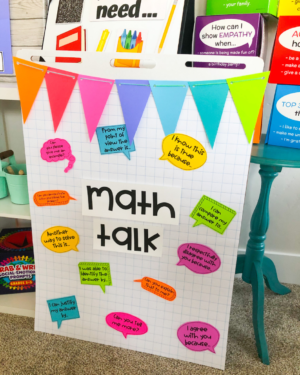Parent-teacher conferences are one of the most important touchpoints between educators and families. It’s a time to connect, build relationships, and provide a clear picture of a student’s academic journey. However, these meetings can sometimes focus too heavily on areas for improvement, which can leave both parents and students feeling discouraged. To create a balanced and productive conference, it’s essential to highlight both the positive and the challenges—and to discuss not only academic progress but also a student’s citizenship and social development.
Highlighting Positives: Reinforce What’s Going Well
One of the best ways to start a parent-teacher conference is by sharing something positive about the student. Whether it’s their enthusiasm for learning, a specific achievement, or their growth in a particular subject, this sets a positive tone and shows parents that you see their child as a whole person, not just someone defined by grades.
Sharing wins builds trust with parents and helps them feel confident that their child is making progress, even if there are areas that need more attention. A few examples of positive feedback might include:
- “Your child has really shown a lot of curiosity in our science lessons, and I’ve noticed them asking thoughtful questions that have sparked great discussions in class.”
- “One thing I appreciate about your child is how willing they are to help their peers. That leadership is something we value so much in our classroom.”
- “I’ve seen tremendous growth in their reading skills. They’ve moved from decoding simple texts to engaging in reading and sharing ideas, and that’s something huge to celebrate.”
Addressing Areas for Improvement: Be Honest but Encouraging
After sharing the positives, it’s important to discuss areas for improvement in a constructive way. Parents want to know how they can help their child succeed, but they also need to hear it in a way that empowers them to take action rather than feeling overwhelmed.
When bringing up challenges, try to frame them as opportunities for growth rather than shortcomings. Use language that highlights a student’s potential, such as:
- “Your child has made progress in math, but they’re still working on mastering their multiplication facts. We’ll be focusing on strategies to help them feel more confident with these skills.”
- “In writing, I’ve noticed they have great ideas but sometimes struggle to organize their thoughts clearly. We’ll continue working on outlining and structure to help them express themselves more effectively.”
Offering practical steps or strategies parents can use at home is a great way to show that improvement is possible and that you’re in partnership with them to support their child’s success.
Citizenship Matters: Beyond Academics
While academic progress is often the main focus, discussing a student’s behavior, work habits, and social development—what we might call “citizenship”—is just as crucial. These conversations help parents understand how their child is growing as a member of the classroom community, which can often impact their academic success as well.
Citizenship covers a range of areas, including:
- Work habits: Does the student complete assignments on time? Are they engaged during class activities? How do they approach challenges or ask for help when needed?
- Social interactions: How does the student work with others? Are they kind and respectful? Do they contribute to group discussions or help classmates when they need it?
- Personal responsibility: How does the student handle their materials, stay organized, and manage their time?
Addressing citizenship helps parents see the bigger picture of their child’s school experience. A student who struggles academically might shine as a classroom leader, or a quiet student may need support in developing stronger peer relationships. Recognizing these aspects of citizenship can also give parents insights into their child’s character and growth beyond just the report card.
Here are a few ways to introduce citizenship into the conversation:
- “Your child is always so respectful during class discussions. They listen to others and offer thoughtful contributions, which makes our class community stronger.”
- “I’ve noticed they’ve taken more responsibility for their homework lately, and that’s great to see. We’ll keep working on building consistent habits.”
- “One area we’re working on is helping them become more comfortable participating in group activities. They have great ideas but sometimes hold back from sharing. We’ll be encouraging them to speak up more.”
Ending on a Positive Note: A Vision for the Future
As the conference comes to a close, it’s helpful to summarize the conversation and end with optimism for the future. Parents should leave feeling that their child is supported, capable, and on the path to success.
Consider offering a clear next step that shows how you, the parent, and the student can work together to achieve specific goals:
- “I’m excited to continue working with your child. With the strategies we discussed, I’m confident we’ll see growth in their math skills.”
- “I look forward to seeing how they develop their leadership abilities even further this year. I’ll continue encouraging them to take on more responsibilities in class.”
Parent-teacher conferences are an opportunity to build a partnership between home and school. By celebrating successes, addressing areas for growth, and highlighting the importance of citizenship, we can foster a positive and productive dialogue that supports the whole child—academically, socially, and emotionally.
When parents and teachers work together, we create the foundation for students to thrive in all aspects of their education.
For more teaching ideas, be sure to become a subscriber!





